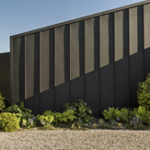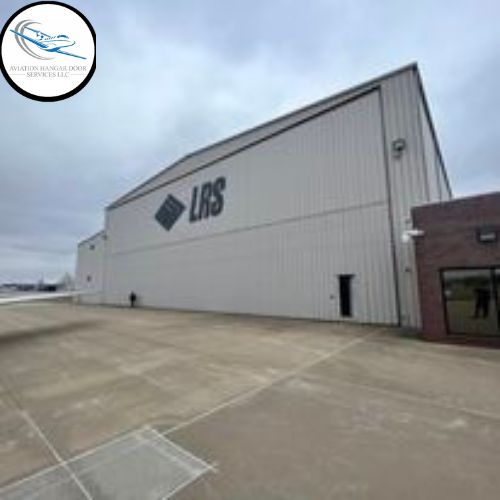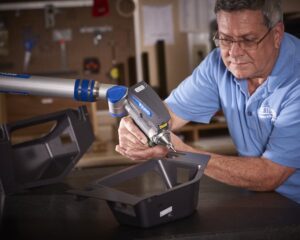The Fire door inspection, a crucial element of modern building management, is a fast race against changing structural safety standards and regulations. It has further grown in significance. It is no longer simply a box-checking in international standards of compliance; it is life-and-property preservation.
The increasing pressure that facility managers face to keep tight safety regulations is forcing a myriad of fire door inspections to be made in relation to smart materials, new codes, and quicker response systems. It seems of absolute importance to know how the evolving discourse on fire safety is influencing inspection procedures to ensure any commercial building is ready for the future.
Fire Door Inspection: Transitions from Annual Scheduling to Real-Time Monitoring
Historically, fire door inspection was a yearly procedure, concentrated on detecting visible wear and hardware function. However, the requirements of the current times have transformed this procedure. The paradigm shift in safety measures through intelligent buildings and IoT-enabled sensors is the premise for the real-time monitoring of doors.
In cases of mechanical failure, unauthorized entry, or even any form of environmental stress, any possibility of a programmed inspection can remain unwanted. Inspectors currently analyze data logs and maintenance records, providing a more active picture of a fire door’s functional health.
Fire Door Inspection and Code Compliance: Shifting to Tighter Standards
Fire codes are no longer stagnant. Updated regulations in states are forcing property owners to review current inspection procedures. Today’s fire door inspection calls for UL, NFPA 80, and IBC compliance—not only for materials used on doors but also hinges, frames, latching devices, and clearances.
Inspectors are taught to see beyond apparent issues and assess if the door has been weakened by past repairs or unauthorized modifications. This development guarantees greater accountability and operational integrity for old as well as new buildings.
Fire Door Inspection and Digital Reporting: Streamlining Data for Smarter Facilities
Along with fire safety documentation going digital, so does fire door inspection reporting. Handwritten logs are being replaced by digital platforms, providing immediate access to inspection results, photographs, timestamped history, and compliance overviews. Electronic transfer makes archiving easier and quicker during audits, and easier sharing with fire marshals or safety consultants. For multi-site properties or busy commercial establishments, digital reports can enable facility teams to tackle maintenance work quickly and efficiently, even circumventing regulatory fines.
Post-Construction Fire Door Inspection in Maintenance Planning
Owners tend to neglect fire door inspection among post-construction activities. Doors that were fitted during construction, though, might be vulnerable to damage from continuous site operations or weather exposure before occupancy.
Introducing post-build inspection can help detect early signs of misalignment, missing hardware, or failed seals. Incorporating door evaluation into the post-construction agenda ensures the building is in complete compliance with codes before handover, minimizing prospective repair expenses or code infractions.
Fire Door Inspection Converges with Emergency Response Protocols
The field of fire door inspection has now expanded to emergency response planning. Inspection information is utilized by safety officers to test fire containment strategy, evacuation readiness, and access control systems.
Doors are required to react quickly in a fire incident—stay closed against pressure but not impede egress. Inspection of fire doors should be done daily to verify proper performance, especially in large locations such as schools, hospitals, and office buildings in high-rise facilities. Malfunctioning closing devices or frames out of alignment hinder the evacuation process.
Beyond the Surface: The Role of 24-Hour Door Repair in Emergency Interventions
During emergencies, structural compromise or forced entry can jeopardize fire doors. This is where 24-hour door repair services in Sturtevant are called upon. Their quick response prevents vulnerabilities from becoming compliance issues or security threats.
Emergency door repair specialists are prepared to work within fire code limitations, ensuring that any replacement or temporary fix meets regulatory requirements. Their access during these times of need also guarantees businesses don’t stay vulnerable during high-risk periods.
Door Repair Installation and Its Impact on Long-Term Fire Safety
The workmanship of door repair installation has a direct bearing on the integrity of a fire door in the long term. Poor installation can make even a certified fire-rated door useless. Installers ensure proper clearances, gaskets, and hardware work together in harmony, maintaining the door’s fire- and smoke-containment capability. I
nstallation accuracy also minimizes friction wear, reduces maintenance requirements, and prolongs fire doors’ useful life, making it a necessary component of any fire safety plan.
Predictive Maintenance: The Future of Door Safety Technologies
Predictive maintenance technologies are on the rise in commercial property management. Rather than responding to wear and tear, building managers now use AI software and usage patterns to plan for service before a failure.
From sensors tracking door cycles to intelligent locks identifying anomalies, these technologies augment inspections by predicting potential problems. By merging human judgment with digital prescience, the industry is shifting toward a more resilient, fail-safe system of door safety.
From Fire Risk to Smart Readiness: The Evolving Landscape of Door Safety
A fire door is no longer a standalone unit; instead, it now falls under a building’s overall risk management plan. Inspection data of doors would be activated in some manner alongside data from HVAC, alarms, and emergency lighting for coordinated safety measures.
The future of fire door technology is intelligent coordination, where inspection is not an annual burden but a living, responsive system embedded within everyday facility operation.
The Key Takeaway: Innovating for ultimate fire safety.
As fire safety advances, the systems that provide the support must evolve as well. With the help of technological improvements, compliance codes, and emergency support services such as 24-hour door repair and door repair installation, the door safety idea becomes more proactive and integrated.
Focusing on thorough fire door inspection in Sturtevant means that buildings are not only code-compliant but secure.
- Future-Proof Your Safety & The Future of Fire Door Inspections
- The increasing pressure that facility managers face to keep tight safety regulations is forcing a myriad of fire door inspections to be made in relation to smart materials, new codes, and quicker response systems.
- Fire Door Inspection Sturtevant, 24 Hours Door Repair Sturtevant, Door Repair Installation
Related posts:
 Can Residential End of Lease Cleaning Help You Get Your Bond Back?
Can Residential End of Lease Cleaning Help You Get Your Bond Back?
 How Much Do Gutter Services Cost in Bradford in 2025 | Complete Price Guide
How Much Do Gutter Services Cost in Bradford in 2025 | Complete Price Guide
 Top-Rated Swimming Pool Remodeling in Hoover AL You Can Trust
Top-Rated Swimming Pool Remodeling in Hoover AL You Can Trust
 Hosting a Big Event? Pre & Post-Party Cleaning Tips You’ll Thank Us For
Hosting a Big Event? Pre & Post-Party Cleaning Tips You’ll Thank Us For
 Safeguard Your Home: Professional Gutter Cleaning Fairfield Keeps Water Where It Belongs
Safeguard Your Home: Professional Gutter Cleaning Fairfield Keeps Water Where It Belongs
 Control Moisture and Prevent Mildew with Transparent Tarpaulin
Control Moisture and Prevent Mildew with Transparent Tarpaulin
 How Cladding Can Improve the Thermal Efficiency of Bournemouth Homes
How Cladding Can Improve the Thermal Efficiency of Bournemouth Homes
 Flat Roof Repair in Cincinnati, OH: Everything You Need to Know
Flat Roof Repair in Cincinnati, OH: Everything You Need to Know







